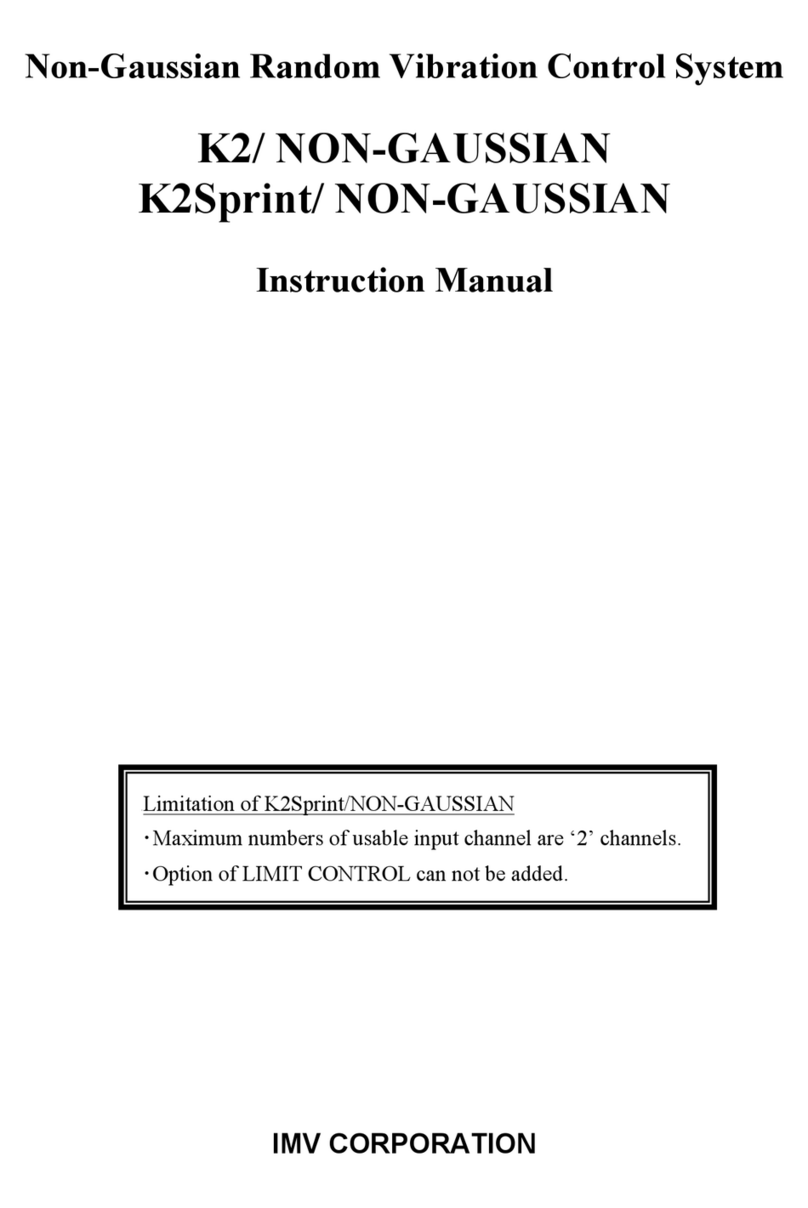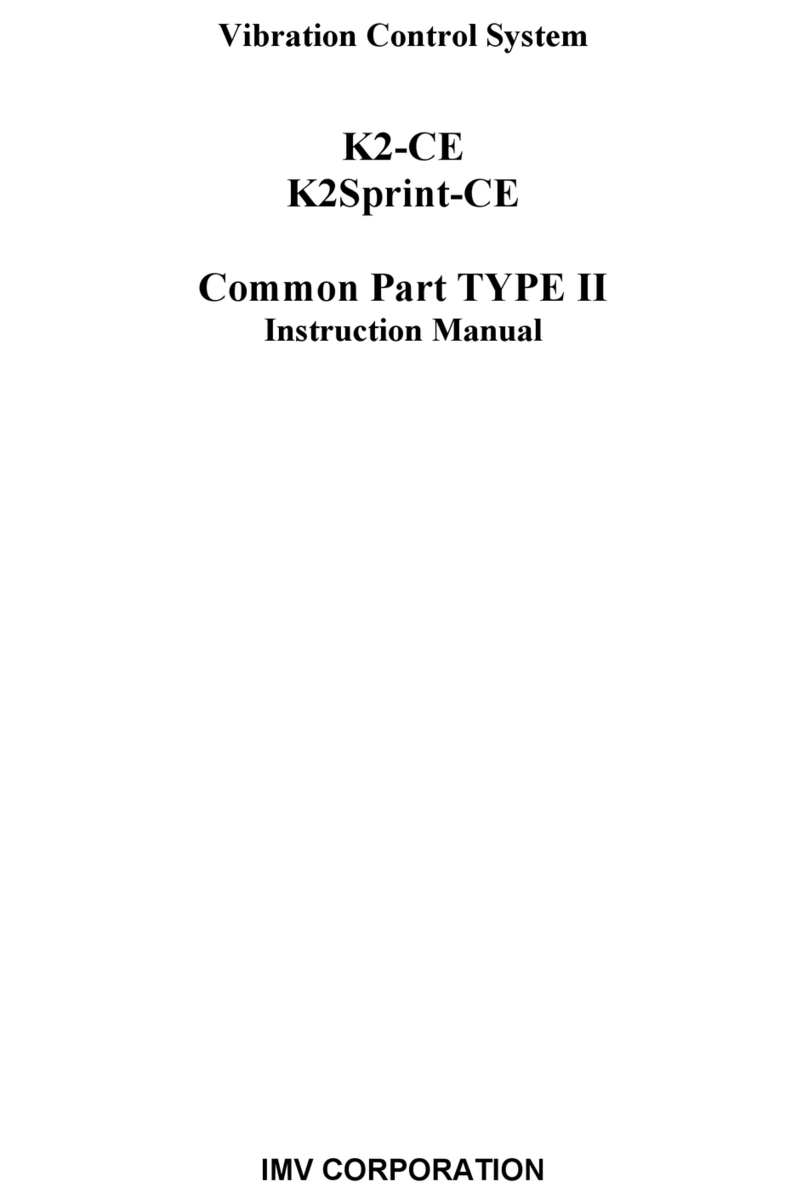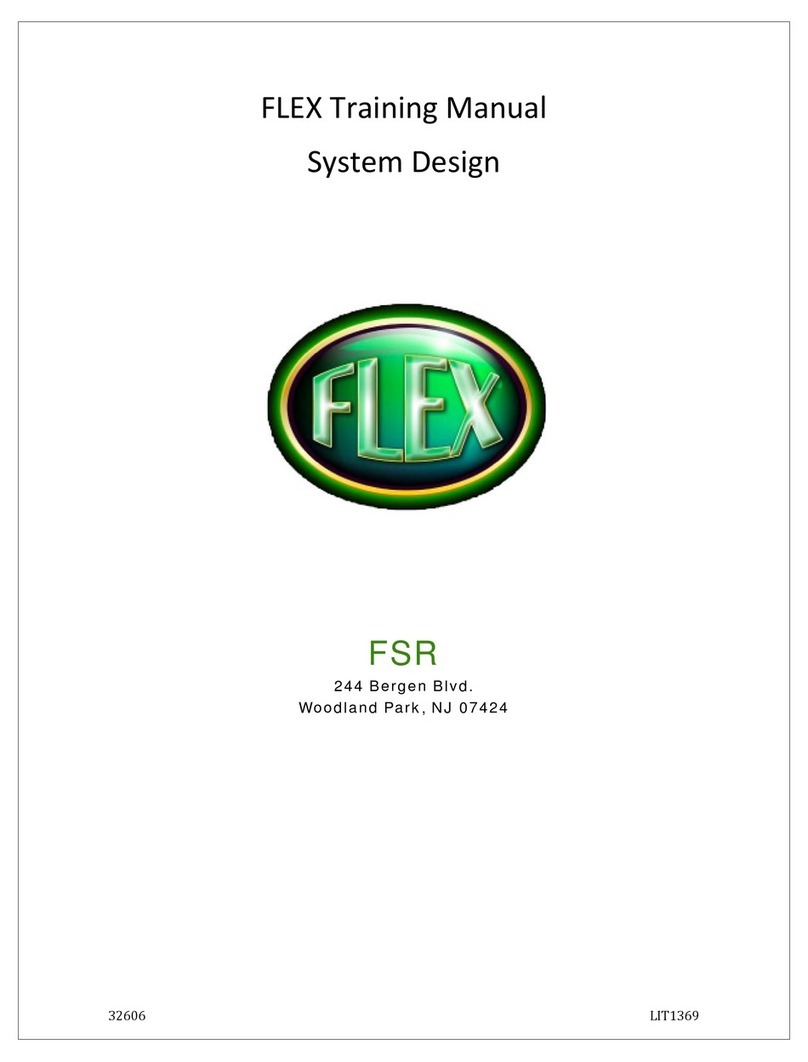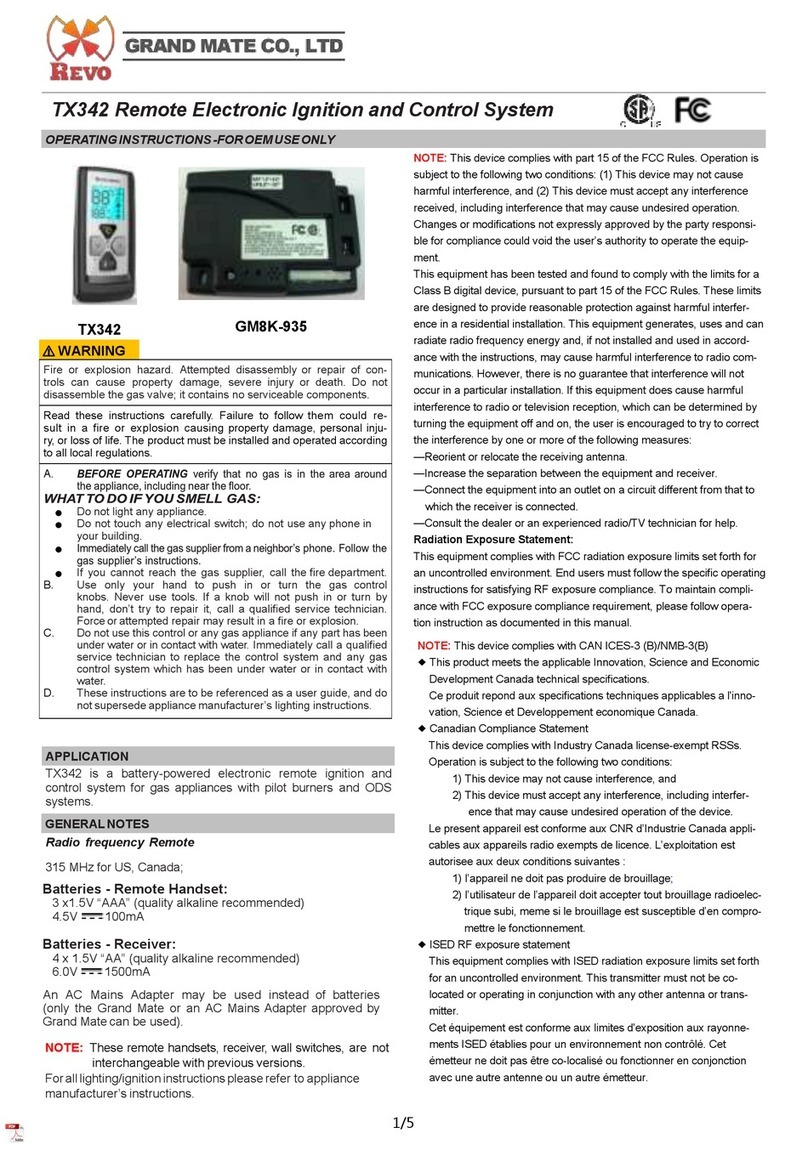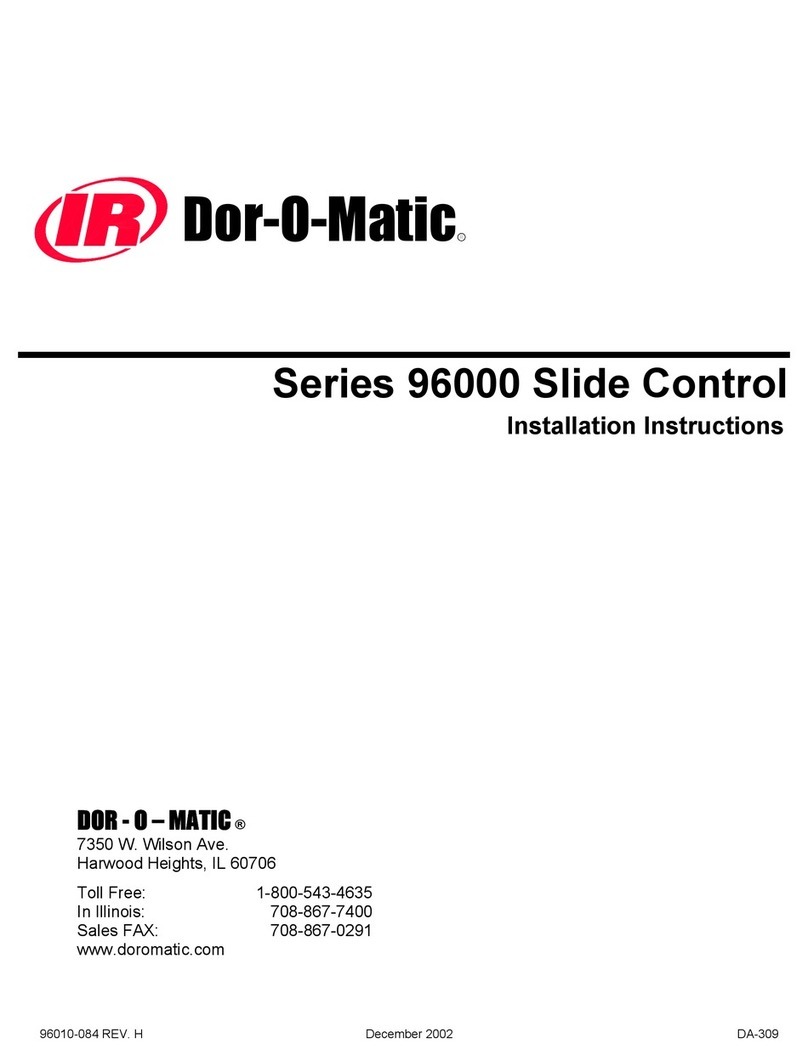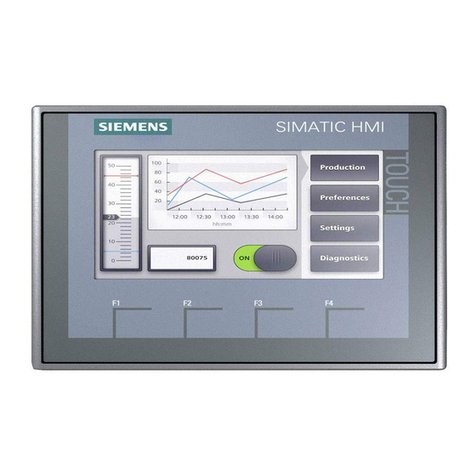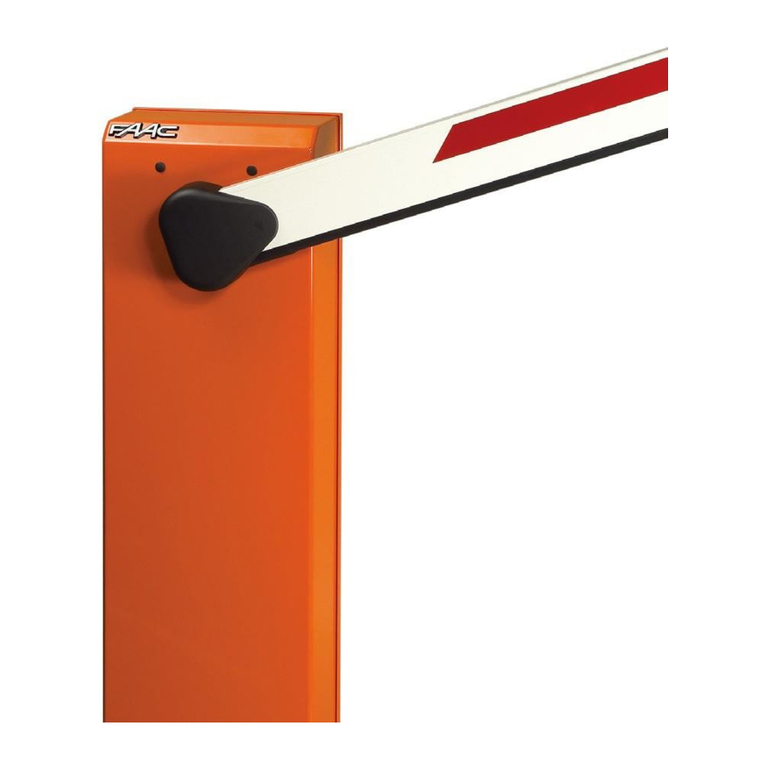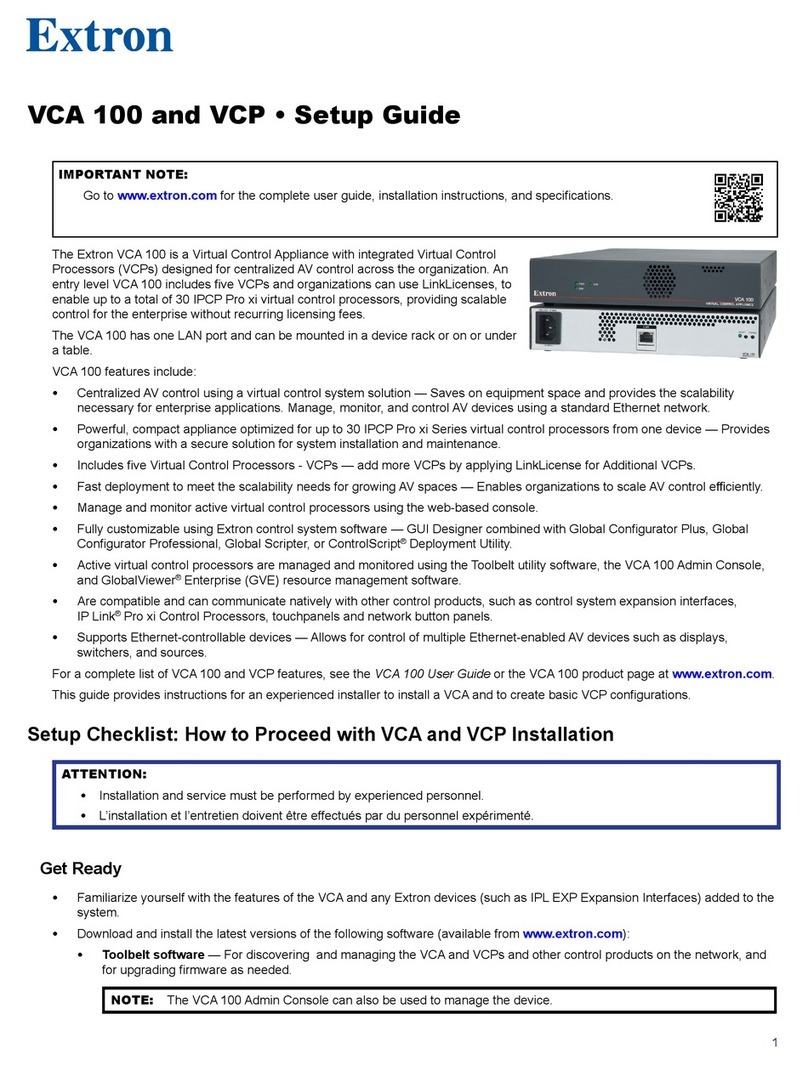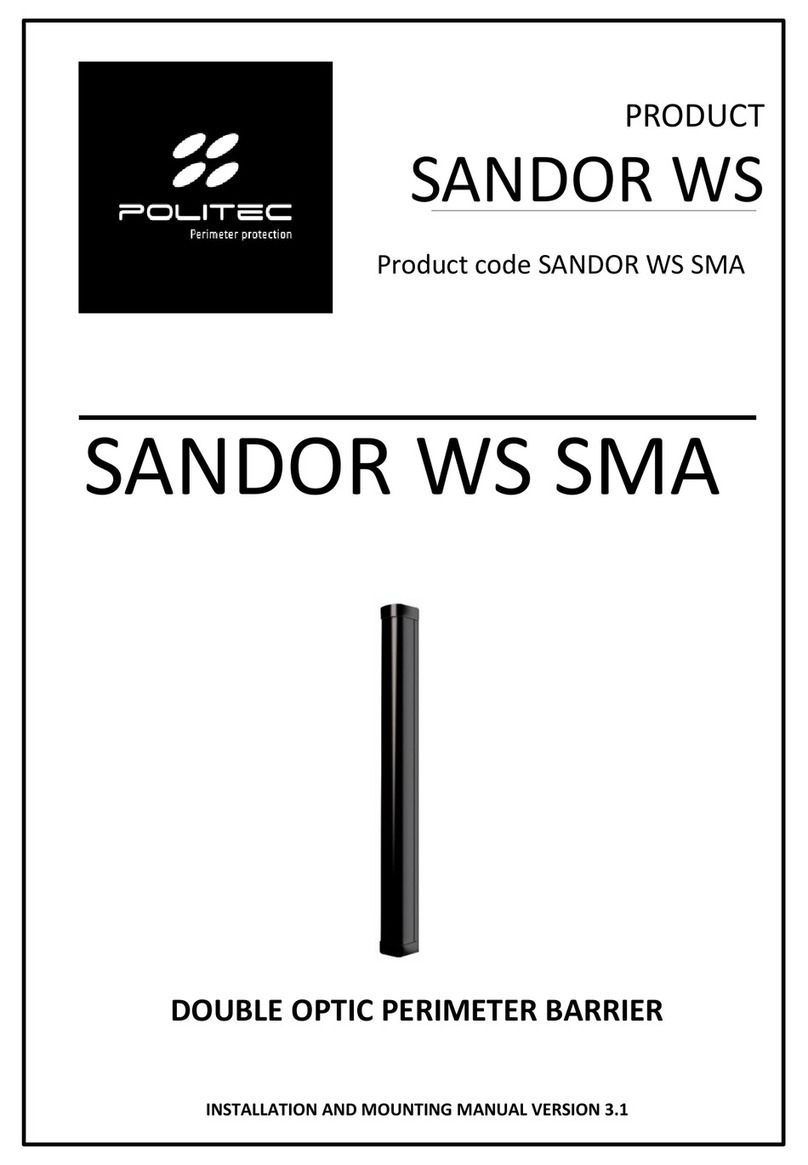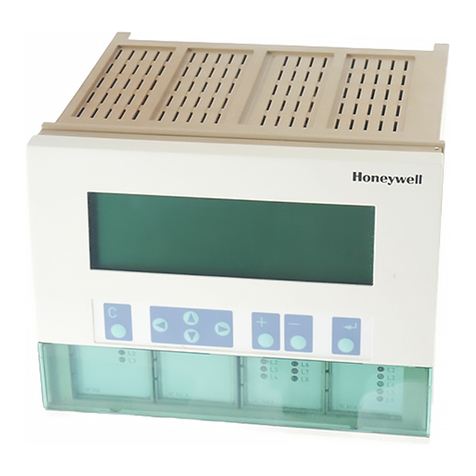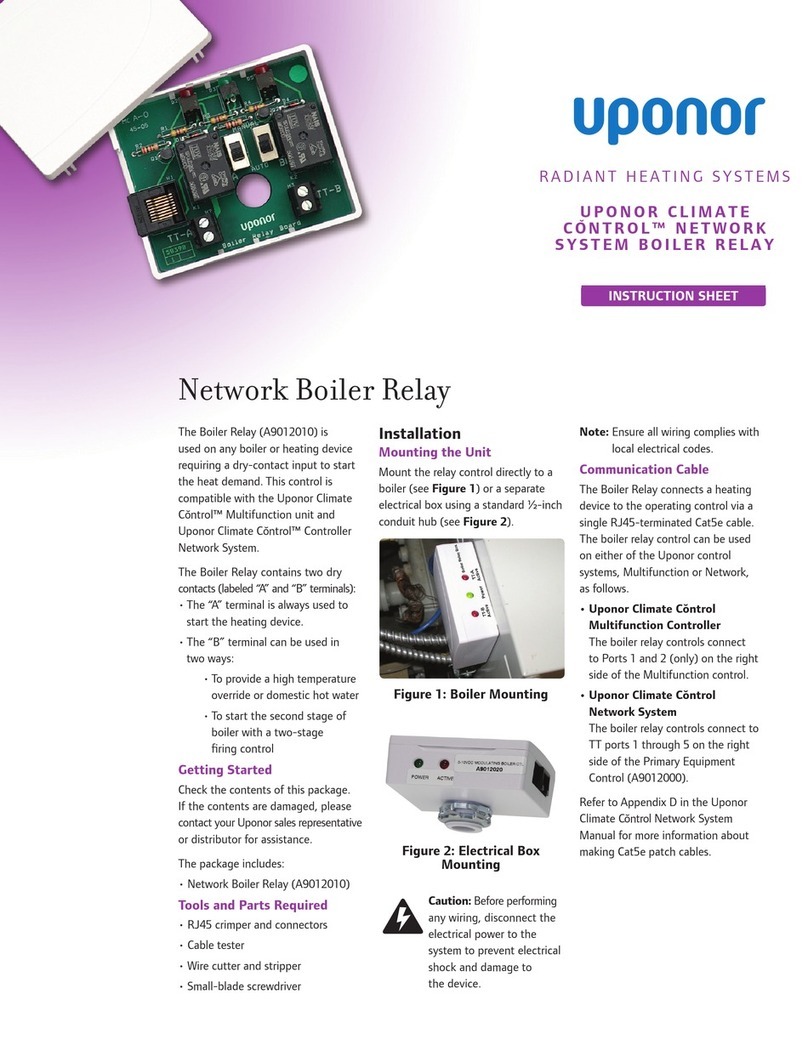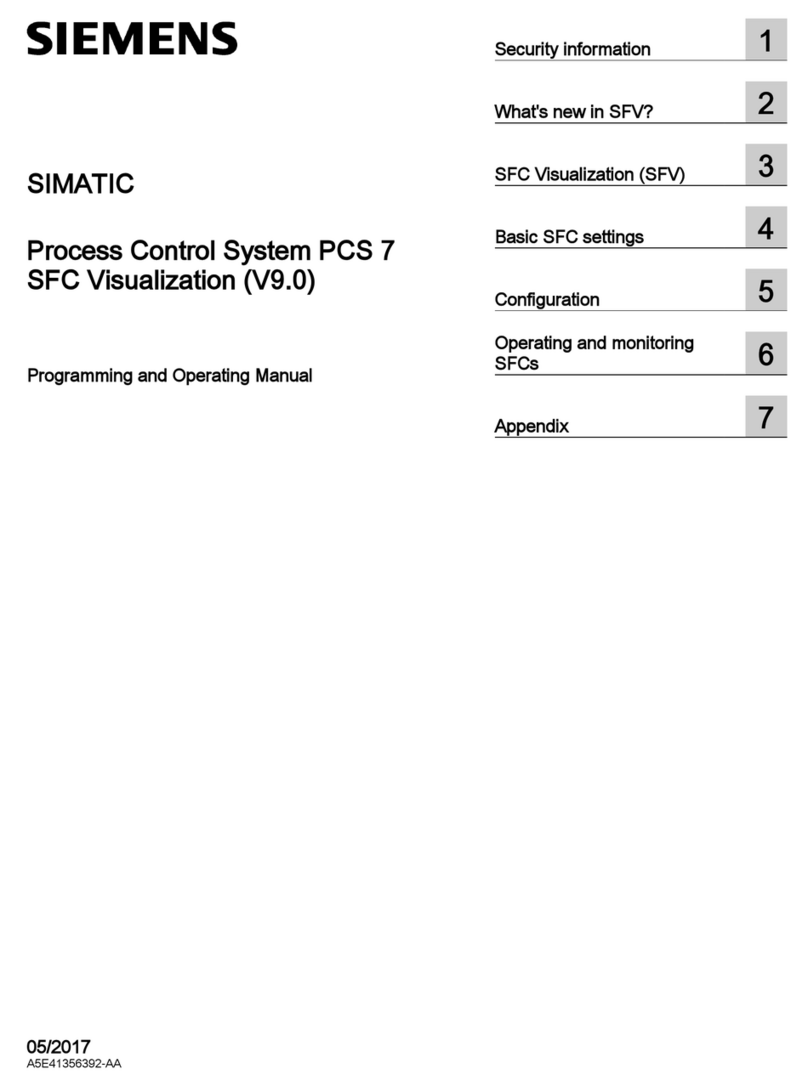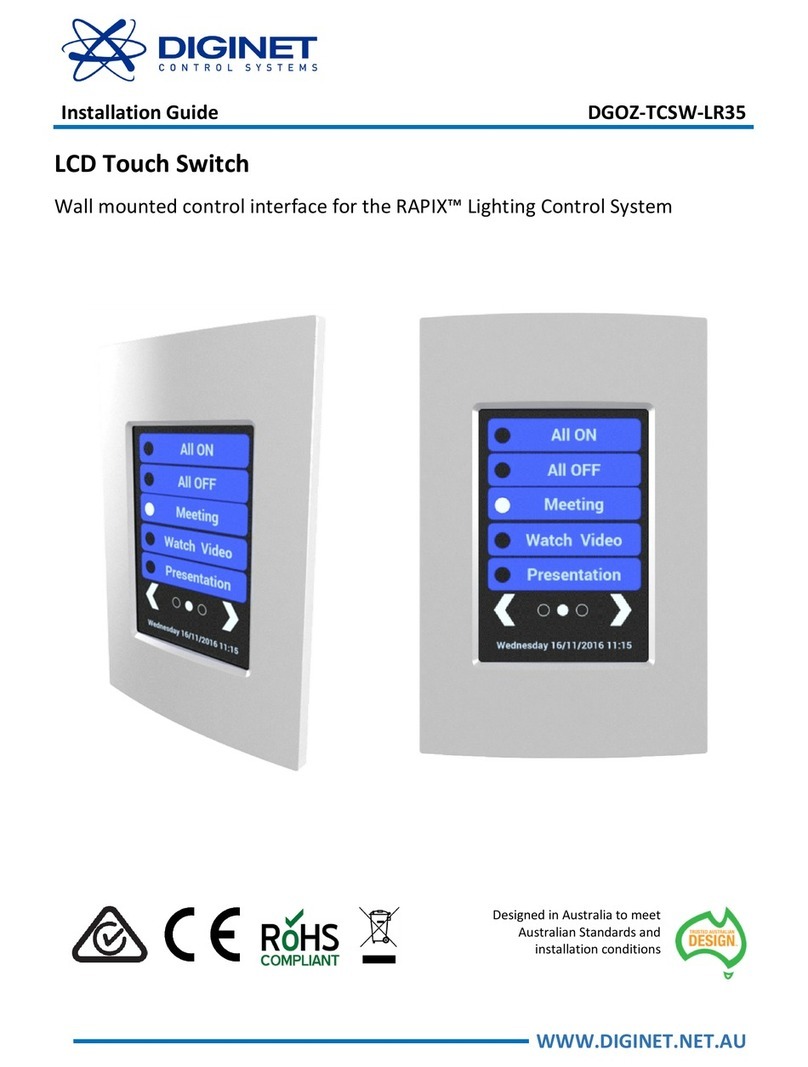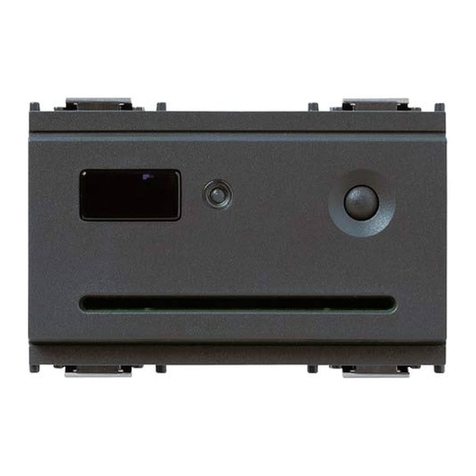IMV K2 User manual

Sine Vibration Control System
K2
K2Sprint
SINE
Instruction Manual
IMV CORPORATION
Limitation of K2Sprint/SINE
・Maximum numbers of usable input channel are ‘2’ channels.
・Option of LIMIT CONTROL can not be added.

Type of Document : Instruction Manual
System Applied : K2/K2Sprint
Software <SINE> later than Version 20.1.0

Japanese Edition
Version Date Contents
1.0.0 2004.01.30 First edition
1.0.1 2004.04.02 Correction of a misprint
1.1.0 2004.05.21 Additional description of Sub. Output,
1.2.0 2004.06.21 Additional description of Measured profile definition
2.0.0 2004.08.10 Additional description of Simplified definition
3.0.0 2005.01.27 Additional description of At processing of re-excitation in Setup
3.1.0 2005.03.31 Additional description of ‘Transmissibility Display Unit’, ‘Excitation Level
Mode’ and ‘Response data save’ in Setup
3.2.0 2005.12.01 Additional description of the function, ‘Hold the sweep at the maximum
sweep frequency’
4.0.0 2006.02.01 Correction of Minimum Control Frequency
4.1.0 2006.06.02 Additional description of “Max. peak” and “Average peak” in Peak
amplitude estimation method.
4.2.0 2007.01.18 Additional description of the function specifying the control reference of
Spot Test to CSV file.
4.2.1 2008.01.18 Correction of a misprint
4.3.0 2008.12.17 Additional description of CSV data file (Measured profile).
4.4.0 2010.08.23 Additional description of ‘Operation Status’ in Setup.
6.0.0 2010.10.21 Applied to Windows7
6.1.0 2011.09.26 Additional description of “Minimum value control”
10.0.0 2013.08.09 Renewal of screen display, modified description of test files, modified
description of input channels, modified description of resonance dwell
(dwell limiting) and additional description of operation setting (display
config for operation)
10.1.0 2013.11.29 Additional description of “Multi Sweep Sine option”.
12.0.0 2015.03.02 Additional description of “Manual Timer”
13.0.0 2016.07.29 Additional description of excite from the initial level at shifting the spots
13.1.0 2017.03.10 Additional description of the setting for skip of saving data files of auto-save
at each sweep turnover (or spot repeat), Correction of misprints
13.5.0 2017.06.27 Additional description of loop check detailed settings
13.5.1 2017.10.11 Correction of a misprint
14.1.0 2018.04.27 Additional description of Function allowing saving only during excitation of
response data saving, additional description of slope in interpolation type of
control reference profile

Version Date Contents
14.2.0 2018.09.10 Additional description of Spot trend graph, additional description of rest
time(Operation Status), additional description of "type of interpolation" of
control reference profile
14.3.0 2019.04.19 Additional description of “Safety check”, modified description of Data save
condition, correction of misprints
14.4.0 2019.09.20 Correction of a misprint
20.1.0 2021.02.01 Additional description of ‘Pause before transitioning to "In excitation"’ of
‘Fundamental/Control Condition’.
Additional description of ‘Clear history at operation start’ and ‘Set the data
file name automatically’ of ‘Set up’.

English Edition
Version Date Contents
1.0.1 2004.04.02 First edition, Correction of a misprint
1.2.0 2004.07.02 Additional description of Sub. Output, Acceleration Pickup Sensitivity
Calibration, Measured profile definition
2.0.0 2004.08.17 Additional description of Simplified definition
3.1.0 2005.04.06 Additional description of ‘at processing of re-excitation’, ‘Transmissibility
Display Unit’, ‘Excitation Level Mode’ and ‘Response data save’ in Setup
3.2.0 2006.01.13 Additional description of the function, ‘Hold the sweep at the maximum
sweep frequency’
4.0.0 2006.02.01 Correction of Minimum Control Frequency
4.1.0 2006.12.07 Additional description of “Max. peak” and “Average peak” in Peak
amplitude estimation method.
4.2.0 2007.06.01 Additional description of the function specifying the control reference of
Spot Test to CSV file.
4.2.1 2008.01.18 Correction of a misprint
4.3.0 2010.02.25 Additional description of CSV data file (Measured profile).
4.4.0 2010.08.23 Additional description of ‘Operation Status’ in Setup.
6.0.0 2010.11.05 Applied to Windows7
6.1.0 2011.09.26 Additional description of “Minimum value control”
10.0.0 2013.08.09 Renewal of screen display, modified description of test files, modified
description of input channels, modified description of resonance dwell
(dwell limiting) and additional description of operation setting (display
config for operation)
10.1.0 2013.11.29 Additional description of “Multi Sweep Sine option”.
12.0.0 2015.03.02 Additional description of “Manual Timer”
13.0.0 2016.07.29 Additional description of excite from the initial level at shifting the spots,
Correction of misprints
13.1.0 2017.03.10 Additional description of the setting for skip of saving data files of auto-save
at each sweep turnover (or spot repeat), Correction of misprints
13.5.0 2017.10.02 Additional description of loop check detailed settings
14.1.0 2018.04.27 Function allowing saving only during excitation of response data saving,
additional description of slope in interpolation type of control reference
profile

Version Date Contents
14.2.0 2018.09.10 Additional description of Spot trend graph, additional description of rest
time(Operation Status), additional description of "type of interpolation" of
control reference profile
14.3.0 2019.04.19 Additional description of “Safety check”, modified description of Data save
condition, correction of misprints
14.4.0 2019.09.20 Correction of a misprint
14.4.1 2019.12.27 Correction of a misprint
20.1.0 2021.02.01 Additional description of ‘Pause before transitioning to "In excitation"’ of
‘Fundamental/Control Condition’.
Additional description of ‘Clear history at operation start’ and ‘Set the data
file name automatically’ of ‘Set up’.

CONTENTS
Chapter 1 Outline of the System........................................................... 1-1
1.1 Specifications .................................................................... 1-1
1.1 1 SINE ........................................................................ 1-1
1.1.2 Resonance dwell (Option of SINE) ............................................ 1-3
1.1.3 Limit Control (Option of SINE) .............................................. 1-4
1.1.4 Multi Sweep Sine (Option of SINE) ........................................... 1-4
Chapter 2 Operation System of K2 Application.............................................. 2-1
2.1 Outline ........................................................................... 2-1
2.2 Test File ......................................................................... 2-2
2.3 Test Type ......................................................................... 2-3
Chapter 3 Basic Operation................................................................. 3-1
3.1 Sweep (Simplified definition) ..................................................... 3-1
3.2 Sweep (Detailed Definition Break Point)............................................ 3-17
3.3 Spot Test ......................................................................... 3-35
3.4 Manual Test ....................................................................... 3-52
3.5 Simplified Definition ............................................................. 3-64
Chapter 4 Test Definition................................................................. 4-1
4.1 Outline ........................................................................... 4-1
4.2 Fundamental/Control Condition ..................................................... 4-2
4.2.1 Controlled variable ......................................................... 4-2
4.2.2 Max. observation frequency .................................................. 4-2
4.2.3 Peak amplitude estimation ................................................... 4-3
4.2.4 Loop check .................................................................. 4-4
4.2.4.1 Transmissibility check value [in initial excitation] .................. 4-6
4.2.4.2 Transmissibility check value [in test operation] ...................... 4-6
4.2.4.3 Overload check value .................................................. 4-6
4.2.5 Equalization mode ........................................................... 4-6
4.2.6 Shutdown time ............................................................... 4-8
4.2.7 Pause before transitioning to "In excitation" ............................... 4-9
4.3 Excitation system setting ......................................................... 4-10
4.3.1 Initial output voltage ...................................................... 4-10
4.3.2 Max. drive voltage .......................................................... 4-10
4.3.3 Testing abort output voltage ................................................ 4-11
4.3.4 Operate initial loop check .................................................. 4-11
4.3.4.1 Frequency ............................................................. 4-12
4.3.4.2 Output voltage ........................................................ 4-12
4.3.4.3 Severity .............................................................. 4-12
4.3.4.4 Environment noise limit ............................................... 4-12

4.3.4.5 Response linearity check.............................................. 4-13
4.3.4.6 Response upper limit check............................................ 4-13
4.4 Control reference ................................................................. 4-14
4.4.1 Sweep test .................................................................. 4-15
4.4.1.1 Sweep mode............................................................ 4-16
4.4.1.2 Direction............................................................. 4-17
4.4.1.3 Sweep rate............................................................ 4-18
4.4.1.4 Hold the sweep at the maximum sweep frequency ......................... 4-18
4.4.1.5 Sweep pause time...................................................... 4-18
4.4.1.6 Profile definition.................................................... 4-19
4.4.1.7 Tolerance definition.................................................. 4-19
4.4.1.8 Test time............................................................. 4-19
4.4.2 Spot test................................................................... 4-21
4.4.2.1 Spot Reference definition............................................. 4-22
4.4.2.1.1 Frequency ...................................................... 4-23
4.4.2.1.2 Level .......................................................... 4-23
4.4.2.1.3 Abort / Alarm level ............................................ 4-23
4.4.2.1.4 Stay time ...................................................... 4-24
4.4.2.2 Auto-generation condition of the spot by profile ...................... 4-24
4.4.2.2.1 Generating mode ................................................ 4-25
4.4.2.2.2 Generation interval ............................................ 4-25
4.4.2.2.3 Direction ...................................................... 4-25
4.4.2.2.4 Stay time (By seconds) ......................................... 4-25
4.4.2.2.5 Stay time (By vibration cycles)................................. 4-26
4.4.2.2.6 Profile definition ............................................. 4-26
4.4.2.2.7 Tolerance definition ........................................... 4-26
4.4.2.3 Test time............................................................. 4-26
4.4.2.4 Repeat pause time..................................................... 4-27
4.4.2.5 Not stop the signal at shifting the spots when the condition is ready . 4-27
4.4.2.6 Manual operation initial parameters is to be changed .................. 4-28
4.4.2.6.1 Excite from the initial level at shifting spots................. 4-28
4.4.2.7 Load CSV file......................................................... 4-29
4.4.2.7.1 Load the data file ............................................. 4-29
4.4.2.7.2 Setting of Tolerance / Stay time................................ 4-31
4.4.2.7.3 CSV file format ................................................ 4-32
4.4.3 Manual Test ................................................................. 4-33
4.4.3.1 Frequency............................................................. 4-34
4.4.3.2 Increment (Frequency)................................................. 4-34
4.4.3.3 Level................................................................. 4-34
4.4.3.4 Increment (Level)..................................................... 4-34

4.4.3.5 Auto shutdown frequency changing ratio ................................ 4-34
4.4.4 Profile definition .......................................................... 4-35
4.4.4.1 Simplified definition ................................................. 4-36
4.4.4.2 Detailed definition (Constant) ........................................ 4-37
4.4.4.2.1 Break point / Frequency (Constant) .............................. 4-38
4.4.4.2.2 Break point / Level (Constant) .................................. 4-38
4.4.4.3 Detailed Definition (Interpolation) ................................... 4-39
4.4.4.3.1 Type of interpolation ........................................... 4-40
4.4.4.3.2 Unit of slope................................................... 4-40
4.4.4.3.3 Break Point / Frequency (Interpolation) ......................... 4-40
4.4.4.3.4 Break Point / Level (Interpolation) ............................. 4-40
4.4.4.3.5 Break Point / Slope (Interpolation) ............................. 4-41
4.4.4.4 Measured Profile Definition ........................................... 4-42
4.4.4.4.1 Outline......................................................... 4-42
4.4.4.4.2 Load the Data File.............................................. 4-43
4.4.4.4.3 Type of interpolation ........................................... 4-44
4.4.4.4.4 Data Processing................................................. 4-44
4.4.4.4.4.1 LPF (Low Pass Filter) Setting............................. 4-44
4.4.4.4.4.2 HPF (High Pass Filter) Setting............................ 4-44
4.4.4.4.4.3 Level Change.............................................. 4-45
4.4.4.4.5 CSV data file (Measured profile) ................................ 4-45
4.4.5 Tolerance definition ........................................................ 4-46
4.4.5.1 Tolerance ............................................................. 4-47
4.4.6 CALC Function ............................................................... 4-48
4.5 Input Channel ..................................................................... 4-52
4.5.1 Outline ..................................................................... 4-52
4.5.2 Input Channel ............................................................... 4-52
4.6 Resonance dwell ................................................................... 4-54
4.6.1 Base channel ................................................................ 4-54
4.6.2 Objective channel for searching the resonance ............................... 4-54
4.6.3 Max. resonance dwell rate ................................................... 4-55
4.6.4 Dwelling Limitation ......................................................... 4-55
4.6.5 Dwell time .................................................................. 4-55
4.7 Data Save Condition ............................................................... 4-56
4.7.1 Outline ..................................................................... 4-56
4.7.2 Save Condition of Data ...................................................... 4-56
4.8 Operation Status .................................................................. 4-58
4.9 Aux. Output ....................................................................... 4-61
4.9.1 Outline ..................................................................... 4-61
4.9.2 Fundamental Operation Example ............................................... 4-61

4.10 Safety check ..................................................................... 4-66
4.10.1 Outline.................................................................... 4-66
Chapter 5 Messages and Meanings .......................................................... 5-1
5.1 K2Sine Error Messages ............................................................. 5-1
Chapter 6 Supplemental Explanation ....................................................... 6-1
6.1 Timer ............................................................................. 6-1
6.2 Set Up ............................................................................ 6-2
6.3 Manual Operation .................................................................. 6-7
6.3.1 Use Examples of Manual Timer ................................................ 6-11
6.4 Acceleration Pickup Sensitivity Calibration ....................................... 6-12
Chapter 7 Definition-related supplement .................................................. 7-1
7.1 Limit control definition .......................................................... 7-1

1 - 1
Chapter 1 Outline of the System
1.1 Specifications
1.1 1 SINE
(1) Control Method : Level control of the swept sine waveform by using the feed-back method
(2) Control Frequency : 0.1~20 000 Hz (However it may be limited by conditions.)
(3) Frequency Resolution : Less than 10-4 of output frequency
(4) Control Dynamic Range : More than 114 dB
(5) Operation Mode
1) Sweep, Spot, Manual
2) Control variables: Response signal / Output voltage
(6) Sweep Operation
Sweep mode : Linear / Log
Sweep type : double / single
Direction : forward / backward
Manual operation at sweeping: excitation pause / sweep pause, reversing of sweep direction,
excitation level change
(7) Test Time: by time / by sweep counts / by excitation times
(8) Input Channel
1) Number of channels: maximum 64
2) Type of channels: Control channel / Monitor channel (possible to duplicate)
3) Peak Amplitude Estimation Method: Averaged value, rms value, Tracking
4) Control Response Averaging Method: Averaged value control / Maximum value control /
Minimum value control
5) Alarm / Abort function: Level value of Alarm / Abort can be specified for each input
channel.
6) Limit Control Function: the maximum allowance profile data can be specified for each
input channel. When the response exceeding over the specified value is detected at a
concerning channel, the system controls this deviated response not to exceeding over the
level of allowance and continues the testing operation without stopping. ‘Limit Control
Option’ is necessary to use this function as above.
(9) Output Channel
1) Number of channels: 1
2) Waveform distortion: Less than 0.1 % (1V rms)

1 - 2
(10) Analysis / Display Data
The trace of the level for controlled response and response of each input channel
The trace of the level for drive
Each level data for every moments, accumulated value of the vibration times
Control response / Drive transmissibility, Each input channel / Controlled response
transmissibility, Each input channel / Drive transmissibility・phase, Transmissibility・phase
between the input channels
Distortion and Single Tolerance of the response signal to each input channels
The trend graph of frequency and each level data (only Spot)
(11) Data Save: Automatic / Manual, Display data save as CSV format
(12) External Contact Function
Input Part: Excitation start, Excitation stop, Pause, Restart, etc.
Output Part: Waiting for excitation start, In excitation, In pause, Test completed normally, Test
completed in error
(13) Optional Specification: Limit Control, Resonance dwell, Multi Sweep Sine

1 - 3
1.1.2 Resonance dwell (Option of SINE)
There are two types of resonance dwelling.
“I. Auto Searching & Dwelling” can work with Resonance Dwell option.
“II. Pre-searching & Dwelling” requires Amplitude Search option in addition to Resonance Dwell
option.
I. Auto Searching & Dwelling (Resonance Dwell option)
This requires a preliminarily specified phase difference considered as a resonance point. The
system automatically dwells upon detection of the specified phase difference since it considers
the difference is a resonance point.
(1) Method
The methods to operate this function are as below;
Resonance point searching by the method of detecting the phase difference between the
specified two response points
Dwelling of the frequency change at the resonance point to be searched
(2) Input Channel
Two input channels used as Base channel for the base of observation and Search channel for
the resonance search are specified.
(3) Search Range of Resonance
Maximum 16 points of search resonance are to be defined. (Its ranges are specified by the
lower and the upper limit frequency.)
(4) Resonance Point Definition
Phase difference to be detected is specified (within -180~+180 : ±90 ゚as default).
(5) Dwell Time
Dwell Time is set by time or by vibration counts.
(6) Change Ratio of the Resonance Function
Dwelling operation is to be controlled by changing Resonance Frequency when the frequency
exceeds over the specified frequency range. (Initial Resonance Frequency is as a basis.)
II. Pre-searching & Dwelling (Amplitude Search option)
This requires that the specified frequency range be preliminarily swept so that frequencies at
which Q-value and Amplitude Transmissibility exceed set value are listed as resonance points. A
frequency selected from among those listed is used as a frequency at which excitation is
performed. The system dwells according to change of the selected resonance frequency.
(1) Method
Consisting of three statuses: Resonance Survey, Resonance Search and Resonance Dwell so as
to perform dwelling according to change of a resonance frequency that has been specified
through Survey and Search.

1 - 4
(2) Input Channel
Two input channels used as Base channel for the base of observation and Search channel for
the resonance search are specified.
(3) Number of Resonance point
A maximum of 16 resonance points can be registered.
(4) Resonance Point Definition
A frequency at which Q-value and Amplitude Transmissibility exceed set value is considered
as Resonance point.
(5) Dwell Time
Time to be specified.
(6) Change Ratio of the Resonance Function
Dwelling operation is to be controlled by changing Resonance Frequency when the frequency
exceeds over the specified frequency range.
(7) Dwelling
There are two types of Dwelling: one that changes frequency within the specified frequency
range to maintain it at the initial phase value while detecting the phase change and the other that
uses a new peak value as Resonance point while detecting the amplitude change and searching a
peak of Amplitude Transmissibility within the specified frequency range. Excitation fixed at
Resonance Frequency is available as well.
(8) Data display
The following time-based data can be graphically displayed. No frequency-based graphic
display is available.
Control response, transmissibility (amplitude and phase), Q-value, frequency, response level
of input channel.
1.1.3 Limit Control (Option of SINE)
(1) Method
Observation Level is given to each limit control channel.
(2) Number of Channels
All the input channels are available to be used (however, the license is needed to be set.)
(3) Objective Physical Quantities
Physical quantity having a different unit from controlled variables is available to be used as a
Limit Control Channel.
1.1.4 Multi Sweep Sine (Option of SINE)
Multi Sweep Sine test is mainly intended to shorten the time of Sine tests, enabling several
different sweep tests to be simultaneously executed.
(1) Control Method: Level control of the multi swept sine waveform by using the feed-back
method
(2) Control Frequency :0.1~20000 Hz (However it may be limited by conditions.)

1 - 5
(3) Frequency Resolution: Less than 10-4 of output frequency.
(4) Control Dynamic Range: More than 114 dB (However it may depend on conditions.)
(5) Operation Mode
1) Multiple frequency sweep
2) Time delayed sweep
3) Multi spot
(6) Sweep Operation
Sweep mode: Log / Linear
Sweep type: Single / Double
Direction: Forward / Backward (only multiple frequency sweep)
Max. number of sine*1: 16(Multi swept sine), 32(Multi spot)
Manual operation at sweeping: excitation pause / sweep pause, excitation level change
(7) Test Time: by sweep counts / by time
(8) Input Channel
1) Number of channels: maximum 64
2) Type of channels: Control channel / Monitor channel (possible to duplicate)
3) Peak Amplitude Estimation Method*2: Tracking, Averaged value, rms value
4) Control Response Averaging Method:
Averaged value control / Maximum value control /Minimum value control
5) Alarm / Abort function:
Level value of Alarm / Abort can be specified for each input channel.
(9) Output Channel
1) Number of channels: 1
2) Waveform distortion: Less than 0.1 % (1V rms)
(10) Analysis / Display Data
The trace of the level for controlled response and response of each input channel
The trace of the level for drive
Each level data for every moments, accumulated value of the vibration times
Control response / Drive transmissibility, Each input channel / Controlled response
transmissibility, Each input channel / Drive transmissibility・phase, Transmissibility phase
between the input channels
(11) Data Save: Automatic / Manual, Display data save as CSV format
*1 It depends on the test setting.
*2 Control channel has to be used 'Tracking' mode.

2 - 1
Chapter 2 Operation System of K2 Application
2.1 Outline
In K2 application, operation after booting up is executed by using a keyboard and a mouse.
When this application is started, a window shown as below appears.
All the names of menu in this application are displayed in Menu bar. Each menu is to be opened by
clicking on its name and available commands appears as a list.
The commands used frequently are displayed as icons in each Tool bar. A command is executed or a
dialog box corresponding to the command is opened when the icon is clicked. Operation status of K2
Controller is displayed in Status bar. The state during the excitation operation is displayed in Operation
status panel.
K2 Application Window
File tool bar
Definition tool bar
Operation status panel
Menu bar
Operation tool bar
Status bar

2 - 2
2.2 Test File
In K2 application, necessary information to operate a test is saved in a specified file called ‘Test file’.
Following kinds of Test file are available in this system.
Necessary Test Files for test operation
・Test Definition File : The file created inVer10.0.0.0 or later
K2SINE(*.swp2, *.spt2, *.mnl2)
The file created before Ver10.0.0.0
K2SINE(*.swp, *.spt, *.mnl)
・Graph Data File : The file created inVer10.0.0.0 or later(*.vdf2)
The file created before Ver10.0.0.0(*.vdf)
・Environment setting File
(I/O Module Configuration Information, Excitation System Information, Input channel
Information) : SystemInfo.Dat2
Note 1) Saved in ‘\IMV\K2_2nd’ on System Drive. Deleting inhibited
In K2 of the version before Ver.10.0.0.0, there are saved in ‘\IMV\K2’ on System
Drive.
In K2 of the version before Ver.6.0.0.0, there are saved in the Windows folder.
Note 2) If the K2 version is upgraded to Ver10.0.0.0 or later ones from previous ones, the
environment setting file will be automatically converted to the format for
Ver10.0.0.0 and later ones during installation.

2 - 3
2.3 Test Type
Three types of tests as below are available in K2/SINE.
①Sweep test
Sweep test is the most popular testing method used in sine vibration test. In this test, the system
operates the sine vibration control by changing the frequency continuously according to the specified
conditions.
②Spot test
In Spot test, the system operates the excitation of the specified condition in order by using the
excitation frequency and reference level specified beforehand.
Sweep operation is not executed in Spot test.
And, arbitrary setting of frequency series is possible in Spot test.
③Manual test
Manual test is for operating a test by the special method. In this test, the system operates a test only
by manual operation.
Control reference condition can be changed arbitrarily during the manual test operation.

3 - 1
Chapter 3 Basic Operation
3.1 Sweep (Simplified definition)
< Example >
An example of sweep test is described as below ;
[Reference pattern]
[Test time]
Sweep rate : 1.000 (octave/min)
The times of double sweep : 1 (double-sweep)
[Information of sensors to be used]
Two acceleration pickups of piezoelectric : one is used for control and another for monitor.
Ch. 1 : for control, sensitivity 3pC/(m/s2)
Ch. 2 : for monitor, sensitivity 3pC/(m/s2)
However, these channels must be registered in Input enviroment information (in this example,
‘SysInp01’).
Also, the rating information of excitation system has already been registered in Excitation system
information (in this example, ‘System1’).
[Information of specimen]
Specimen mass : 10[kg]
Frequency [Hz]
Acceleration
[m/s2]
10 31.83 2000
20.0
Displacement:
1[mm]

3 - 2
< Procedures >
< Step 1 >
Press the button of [New] to start new definition.
< Step 2 >
Select the item of ‘Sweep’ in Test type.
Other manuals for K2
5
This manual suits for next models
1
Table of contents
Other IMV Control System manuals
